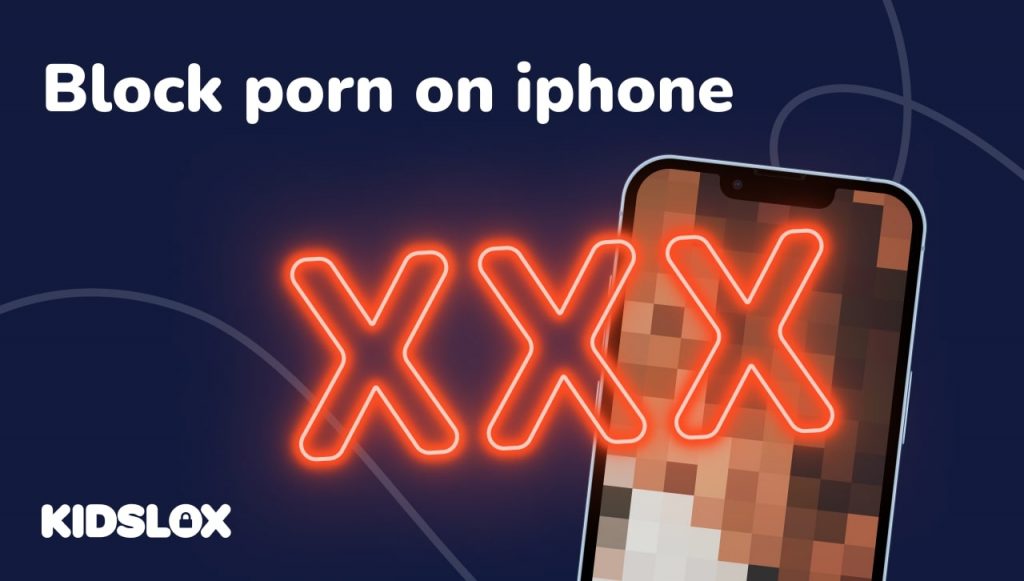Parental controls can offer families peace of mind when it comes to monitoring their children’s online activity. And with nearly 87% of teens owning an iPhone, it’s essential to be aware of the possible dangers they are exposed to on their device.
Think about it – there’s more technology in your child’s device than existed on the first space shuttle. These miracles of modern knowledge allow us to research, connect, game, and more – and that includes the ability to access inappropriate content.
For parents who want to ensure that their children have access to a smartphone – but without the risks associated with unrestricted internet access – blocking porn on an iPhone is essential.
In this guide on how to block adult websites on iPhones, we will take a look at the reasons why blocking adult content is essential, how to do it, and the best parental control apps available.
By taking these steps, parents can rest assured that their child’s iPhone is as safe as possible.
What Is Adult Content?
Adult content is any form of media, images, or videos containing explicit sexual material or violent content. This includes pornography, explicit music videos, and other material on violence and/or illicit behavior.
While most adult content can be easily identified by its subject matter, there are often more subtle forms, such as books, movies, and even video games, that may contain adult themes without being overtly explicit. It’s up to parents to decide what their children should have access to and what they should stay away from.
However, there are a few key indicators that you should watch for when it comes to web content:
1. Look for explicit language and/or images.
One key indicator that you’ve come across adult content is using explicit language such as profanity, vulgarities, and obscenities. Additionally, images that are sexually suggestive or graphic may also be present. These elements may appear in a web page’s text, titles, or images.
2. Check for age restrictions.
Is the website or content your child tries to access on their iPhone blocked behind an age restriction? If so, this is a sure sign that the content may not be suitable for minors. Many sites will prompt a user to insert their date of birth prior to accessing the content.
However, remember that these are easy to bypass – and can often be done so on the same page. Therefore, if you see an age restriction notice, it is best to double-check with your child about what they are trying to access.
3. Be aware of pop-up ads.
Another common sign that a website may contain inappropriate content is the presence of pop-up ads. These can sometimes appear at random on certain websites, and they typically contain suggestive or graphic images.
If your child is accessing an app or website containing these types of advertisements, removing access from their iPhone or tablet may be best. Not only can these ads expose kids to inappropriate material, but they can also be a source of malware and other dangerous viruses.
4. Check the website’s privacy policy.
Does the website your child is trying to reach offer a clear and understandable privacy policy? If not, or if you don’t understand the terms of use, it may be best to steer clear and find an alternative website.
A good privacy policy should clearly outline how personal information is being collected and stored, as well as how it will be used. If this isn’t available on the website, look for a “contact us” link to inquire further.
Before You Block: Chat With Your Kids About The Dangers
One of the best ways to help your child safely navigate the internet is to have an honest conversation with them about online safety. Not only does this help set the foundation for healthy behaviors online, but it creates a place of trust and open communication for other topics.
Here are a few tips to help you chat with your child about inappropriate content:
1. Tell them why their online safety and exposure are vital to you.
Before you jump to what you are going to do to block content, make sure to explain why it is important to limit adult websites and other content. This helps your child understand the seriousness of your concerns and, more importantly, why you want them to be safe online. Share with them the risks associated with viewing explicit material, such as predators and malware.
2. Ask them about their understanding of safe internet practices.
By asking your child questions about what they have seen online, you can more easily assess their level of understanding and knowledge when it comes to staying safe on the web. This also helps open up a dialogue between you and your child – especially when it comes to specific websites or other web search content.
3. Listen to their questions and concerns.
A good conversation is a two-way street – make sure that you are listening to your child’s thoughts and feelings, as well as responding with your own. This helps create a space of open dialogue and mutual trust between the two of you. Digital literacy requires that both parent and child have an understanding of the risks associated with online access.
4. Tell them what steps you will take to block inappropriate content.
Once you have had a conversation about the risks associated with online access, make sure to explain what steps you will take to block explicit material. This could include parental controls or other software that monitors and restricts their web activity. You can also set rules for when they can access the internet and discuss any consequences of not following these rules.
By having a conversation with your child about internet safety, you can help them better understand the risks associated with viewing inappropriate content and why it is crucial to keep themselves safe online. Ultimately, this will help protect your children from potentially harmful material on the web.
How to Block Porn on iPhone
If you want to ensure that your child is protected from viewing explicit material, there are a few steps you can take. Here are some tips to help block porn on your child’s iPhone:
Method 1: Use the iPhone’s Native Content Restrictions
Turning On Native Restrictions (iOS 12 and Higher)
Native restrictions are included in Apple’s newer operating systems, such as iOS 12 and higher. These restrictions allow you to control a variety of settings, including limiting access to explicit material.
With these native restrictions, you can control the apps and features that are available to your child, as well as limit their access to certain content. Here’s a step-by-step guide on how to set up parental restrictions on an iPhone:
- Go to the Settings app and tap on “Screen Time.”
- Tap “Content & Privacy Restrictions” and enter your Screen Time passcode if prompted.
- Turn on the toggle for “Content & Privacy Restrictions.”
- Select “Content Restrictions” and choose the type of content you want to restrict (e.g., music, movies, etc.).
- Tap “Allowed Apps” and select which apps you want to allow your child to use.
- Tap “Always Allowed” and select any features or services you want your child to be able to access at all times (e.g., AirDrop).
- Finally, tap “Don’t Allow Changes” at the top of the screen so that no one can change these settings without entering your passcode again.
By following these steps, you can easily set up parental restrictions on an iPhone with iOS 12 or higher in order to keep your child safe while using their device!
Turning On Native Content Restrictions (Pre-iOS 12)
For devices that are running an older version of Apple’s operating system, such as iOS 11 or earlier, there is a different process to limit access to adult sites and other content. Here’s how to set them up:
- Go to the Settings app and tap on “General.”
- Tap on “Restrictions” and enter your Restrictions passcode (if you don’t have one, you can create one).
- Select the type of content you want to restrict (e.g., music, movies, etc.).
- Tap “Allow Changes” and select which apps you want to allow your child to use.
- Finally, tap “Don’t Allow Changes” at the top of the screen so that no one can change these settings without entering your passcode again.
By following these steps, you can easily set up parental restrictions on an iPhone with pre-iOS 12 to keep your child safe while using their device!
Method 2: Block Content At The Router Level
A second way to block adult content from your child’s iPhone is by creating rules on your router. This is done by creating a custom list of blocked websites or keywords. Any website or keyword matching the ones you have entered will be blocked from appearing in search results.
Also known as “DNS-level filtering,” this type of content restriction works by using a service that redirects your internet traffic away from blocked websites. This means that even if your child attempts to access a website on their iPhone, the service will intercept their request and redirect them away before they can view any inappropriate content.
To set router-level restrictions, follow the manual or guide that came with your router. Most routers will have a section in the settings where you can create and configure content-restricting rules.
It’s important to remember that a router only applies to WiFi connections, so if your child is using a cellular network, these rules will not be applied.
Method 3: Use a Third-Party Parental Control App
One of the best ways to provide holistic protection from pornography on iPhones or other devices is through a third-party parental control app. These apps provide an intuitive and comprehensive way to keep track of what your child is doing online, as well as block pornographic content.
Parental control apps usually offer a wide range of features, such as:
- Activity monitoring, including app usage, website visits, and more.
- Time limits for when your children can access the internet or specific apps.
- Content filtering to block websites based on age appropriateness or keyword filters.
- Geolocation tracking, so you know where your child is at any given time.
These apps provide an extra layer of protection for your child and are especially beneficial if you have a large family or multiple devices.
Kidslox – a leading third-party parental control app – allows you to easily set up a comprehensive protection system for your family’s iPhones. With Kidslox, you can quickly and easily block inappropriate content, monitor activity, manage time limits, and more.
How Kidslox Helps Block Porn on iPhone – and More!
Kidslox offers a variety of valuable features that help keep your family safe from the harms of pornography and other inappropriate content.
Web Filtering: Kidslox utilizes a powerful web filter that automatically activates on any connected device and blocks over 5 million inappropriate websites.
Safe Google Searching: With Kidslox, you can trust that your children’s searches will be free of adult content with automated Google Safe Search activation.
Suspicious Search Notifications: Parents will receive an automated notification if their child conducts a suspicious search. Even when this happens accidentally, it’s a great way to start a conversation with your child about what kind of content is appropriate to search for.
Daily Reporting: Receive a report on any searches or attempted accesses of inappropriate content.
Manual Blacklisting: Block sites on your own with our intuitive blacklisting feature. This ensures that your child can never access any content you deem inappropriate.
Help Kids Stay Safe on iPhones with Kidslox
If you are ready to help your child stay safe from inappropriate content and protect them from the harms of pornography on iPhones, Kidslox is here to help.
Our robust parental control app offers a comprehensive way to shield your family from online dangers, with an intuitive and user-friendly interface that simplifies the process for parents. Try it today!
To learn more about staying safe online, check out our guides and resources designed to help parents and guardians stay ahead of the latest trends and technologies in online safety. With Kidslox, you can rest assured that your family is in good hands!





